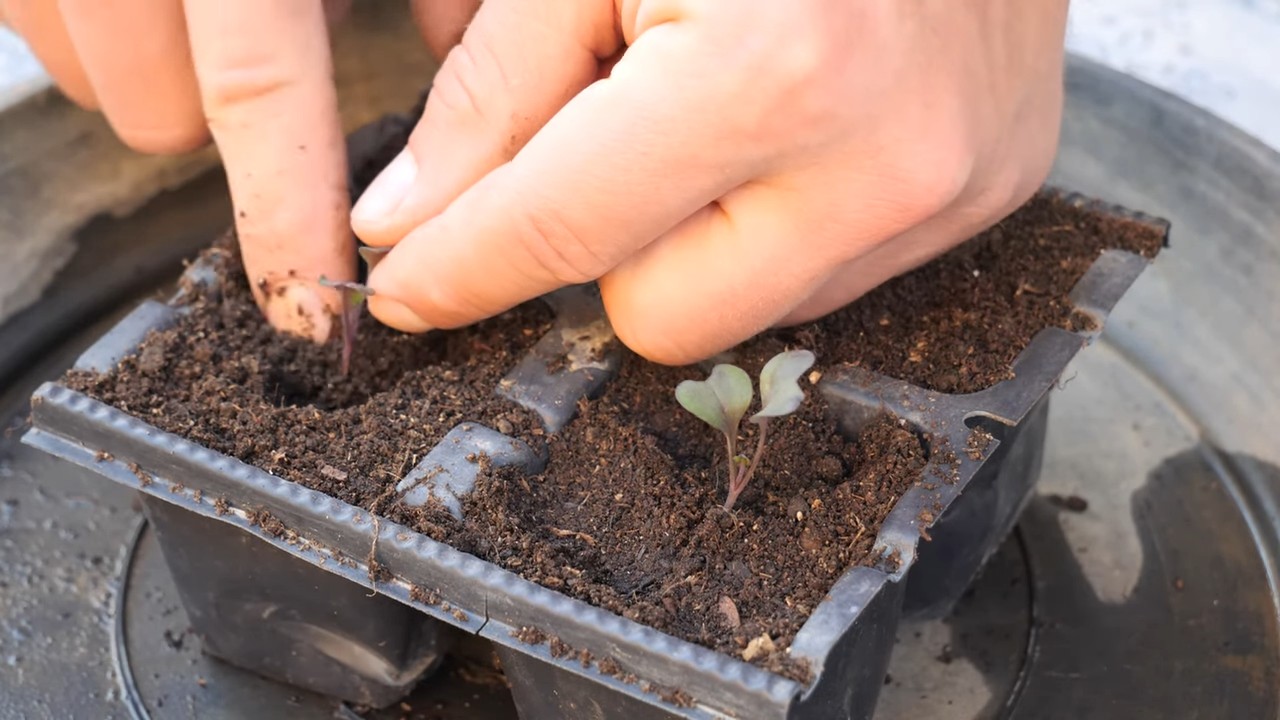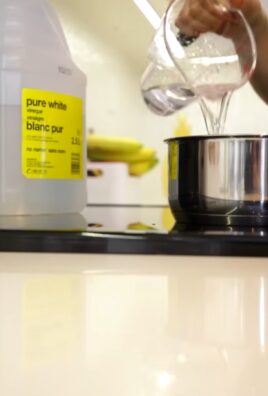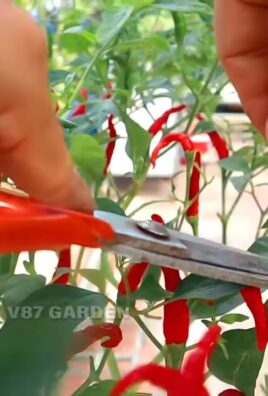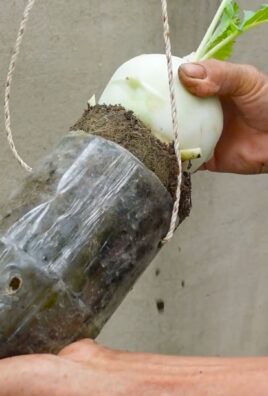Balcony gardening red cabbage might sound intimidating, but trust me, it’s a surprisingly rewarding and space-saving way to add vibrant color and fresh, healthy food to your life! Forget those bland, store-bought cabbages – imagine harvesting your own crisp, flavorful red cabbage right outside your door.
For centuries, cabbage has been a staple in diets across the globe, from ancient Rome where it was considered a medicinal plant, to Eastern Europe where it’s a key ingredient in hearty stews and fermented dishes. But you don’t need acres of land to participate in this rich culinary tradition.
In today’s world, where urban living is increasingly common and access to fresh produce can be limited, balcony gardening red cabbage offers a fantastic solution. This DIY guide will walk you through every step, from choosing the right container and soil to protecting your precious crop from pests. I’ll share my favorite tricks and hacks to ensure your balcony garden thrives, even in small spaces. You’ll learn how to maximize your yield, prevent common problems, and ultimately, enjoy the satisfaction of growing your own delicious, nutritious red cabbage. So, let’s get our hands dirty and transform your balcony into a mini-farm!

Growing Red Cabbage in Containers: A Balcony Gardener’s Guide
Hey there, fellow balcony gardeners! Ever thought about growing red cabbage? It’s not just for sauerkraut and salads; it’s a stunning addition to any container garden, adding a pop of vibrant color and texture. Plus, homegrown veggies always taste better, right? I’ve been growing red cabbage on my balcony for a few seasons now, and I’m excited to share my tips and tricks with you. Let’s get started!
Choosing the Right Container and Soil
First things first, you’ll need a suitable container and the right soil mix. This is crucial for healthy cabbage growth.
* Container Size: Red cabbage needs room to grow. I recommend a container that’s at least 12 inches in diameter and 12 inches deep. A 5-gallon bucket or a large planter works perfectly.
* Drainage: Make sure your container has drainage holes. Cabbage doesn’t like soggy roots.
* Soil Mix: Use a well-draining potting mix that’s rich in organic matter. I like to mix equal parts of compost, peat moss (or coconut coir), and perlite. This provides good drainage, aeration, and nutrients.
Planting Your Red Cabbage
Now for the fun part – planting! You can start red cabbage from seeds or buy seedlings from a local nursery. I usually opt for seedlings because they give me a head start.
1. Starting from Seeds (Optional): If you’re starting from seeds, sow them indoors about 6-8 weeks before the last expected frost. Plant the seeds about ¼ inch deep in seed-starting mix. Keep the soil moist and provide plenty of light. Once the seedlings have a few true leaves, you can transplant them into individual pots.
2. Preparing the Container: Fill your container with the potting mix, leaving about an inch or two of space at the top.
3. Transplanting Seedlings: Gently remove the seedlings from their pots, being careful not to damage the roots. If the roots are tightly bound, gently loosen them with your fingers.
4. Planting the Seedlings: Dig a hole in the potting mix that’s large enough to accommodate the root ball. Place the seedling in the hole and backfill with soil. Make sure the top of the root ball is level with the soil surface.
5. Spacing: If you’re planting multiple red cabbage plants in the same container, space them at least 12 inches apart.
6. Watering: Water the seedlings thoroughly after planting.
Caring for Your Red Cabbage
Red cabbage needs consistent care to thrive. Here’s what you need to do:
1. Watering: Water regularly, especially during hot, dry weather. Cabbage needs consistent moisture, but avoid overwatering, which can lead to root rot. Check the soil moisture by sticking your finger into the soil. If the top inch feels dry, it’s time to water.
2. Sunlight: Red cabbage needs at least 6 hours of sunlight per day. Place your container in a sunny spot on your balcony.
3. Fertilizing: Feed your red cabbage every 2-3 weeks with a balanced liquid fertilizer. Follow the instructions on the fertilizer label. I like to use a fertilizer that’s high in nitrogen, phosphorus, and potassium.
4. Mulching: Add a layer of mulch around the base of the plant to help retain moisture and suppress weeds. Straw, wood chips, or shredded leaves work well.
5. Pest Control: Keep an eye out for pests like cabbage worms, aphids, and slugs. Handpick any pests you see. You can also use insecticidal soap or neem oil to control pests. I prefer organic methods whenever possible.
6. Weed Control: Remove any weeds that pop up in the container. Weeds compete with the cabbage for nutrients and water.
Dealing with Common Problems
Even with the best care, you might encounter some problems while growing red cabbage. Here’s how to deal with them:
* Cabbage Worms: These green caterpillars can quickly devour your cabbage leaves. Handpick them off the plants or use Bacillus thuringiensis (Bt), a natural insecticide.
* Aphids: These tiny insects suck the sap from the leaves, causing them to curl and distort. Spray the plants with insecticidal soap or neem oil.
* Slugs: Slugs can damage the leaves and heads of cabbage. Use slug bait or traps to control them. You can also try placing copper tape around the base of the container, as slugs don’t like to cross copper.
* Clubroot: This fungal disease causes the roots to swell and distort, stunting the growth of the plant. Prevent clubroot by using disease-free soil and avoiding overwatering. If you suspect clubroot, remove the affected plants and dispose of them properly. Don’t plant cabbage or other brassicas in the same spot for several years.
* Bolting: Bolting occurs when the cabbage plant prematurely produces a flower stalk. This can happen if the plant is stressed by heat or drought. To prevent bolting, keep the soil moist and provide shade during hot weather.
Harvesting Your Red Cabbage
Harvest time is the most rewarding part of gardening! Red cabbage is usually ready to harvest about 70-80 days after planting.
1. Checking for Ripeness: The head of the cabbage should be firm and dense.
2. Harvesting: Use a sharp knife to cut the head of the cabbage from the stem. Leave a few outer leaves on the plant, as they can protect the head from sun damage.
3. Storage: Store the harvested cabbage in the refrigerator. It will keep for several weeks.
Tips for Success
Here are a few extra tips to help you grow the best red cabbage on your balcony:
* Choose the Right Variety: Some red cabbage varieties are better suited for container gardening than others. Look for compact varieties like ‘Red Express’ or ‘Ruby Ball’.
* Rotate Your Crops: Don’t plant cabbage in the same container year after year. Rotate your crops to prevent soilborne diseases.
* Provide Support: If your red cabbage plant gets top-heavy, you may need to provide support with a stake or cage.
* Companion Planting: Plant red cabbage with companion plants like dill, chamomile, and rosemary. These plants can help repel pests and attract beneficial insects.
* Enjoy the Process: Gardening should be fun! Don’t get discouraged if you encounter problems. Just learn from your mistakes and keep trying.
Troubleshooting Guide
Sometimes, even with the best intentions, things can go wrong. Here’s a quick troubleshooting guide to help you diagnose and fix common red cabbage growing issues:
* Yellowing Leaves: This could indicate a nutrient deficiency, especially nitrogen. Try feeding your cabbage with a balanced fertilizer or adding some compost to the soil. Overwatering can also cause yellowing leaves, so make sure your container has good drainage.
* Stunted Growth: Stunted growth can be caused by a variety of factors, including poor soil, lack of sunlight, or pest infestations. Check the soil pH and nutrient levels, ensure your cabbage is getting enough sunlight, and inspect the plant for pests.
* Splitting Heads: This usually happens when the cabbage head grows too quickly after a period of drought. To prevent splitting, water your cabbage consistently, especially during dry spells.
* Small Heads: Small heads can be caused by insufficient sunlight, poor soil, or overcrowding. Make sure your cabbage is getting at least 6 hours of sunlight per day, amend the soil with compost, and thin out the plants if they are too close together.
* Holes in Leaves: This is often a sign of cabbage worms or other pests. Inspect the plant regularly and handpick any pests you find. You can also use insecticidal soap or Bt to control pests.
Advanced Techniques for the Avid Gardener
Want to take your red cabbage growing to the next level? Here are a few advanced techniques to try:
* Succession Planting: Plant red cabbage seeds or seedlings every few weeks to ensure a continuous harvest throughout the growing season.
* Overwintering: In mild climates, you can overwinter red cabbage plants for an early spring harvest. Protect the plants from frost with a layer of mulch or a cold frame.
* Seed Saving: Save seeds from your best red cabbage plants to grow next year. Allow a few plants to bolt and produce seed pods. Once the pods are dry, harvest the seeds and store them in a cool, dry place.
* Fermenting: Turn your homegrown red cabbage into delicious sauerkraut or kimchi. Fermenting not only preserves the cabbage but also adds beneficial probiotics.
Red Cabbage Recipes to Try
Now that you’ve grown your own red cabbage, it’s time to enjoy the fruits (or vegetables!) of your labor. Here are a few of my favorite red cabbage recipes:
* Red Cabbage Slaw:

Conclusion
Transforming your balcony into a vibrant, productive garden is easier than you think, and growing your own red cabbage is a fantastic place to start. This DIY approach to balcony gardening red cabbage isn’t just about saving money; it’s about connecting with nature, understanding where your food comes from, and enjoying the unparalleled flavor of freshly harvested produce. Imagine the satisfaction of snipping off a crisp, colorful leaf for your salad, knowing you nurtured it from seed to table, all within the confines of your own urban oasis.
But why is this DIY method a must-try? Firstly, it’s incredibly rewarding. Watching a tiny seed sprout and develop into a beautiful, edible plant is a truly magical experience. Secondly, it allows you to control the growing environment, ensuring your red cabbage is free from harmful pesticides and chemicals. You know exactly what’s going into your food, giving you peace of mind and a healthier harvest. Thirdly, it’s adaptable. Balcony gardening red cabbage can be tailored to your specific space and preferences.
Consider these variations to personalize your red cabbage growing experience:
* **Companion Planting:** Plant marigolds or nasturtiums alongside your red cabbage to deter pests naturally. Their vibrant colors also add a touch of beauty to your balcony garden.
* **Container Choices:** Experiment with different container sizes and materials. Terracotta pots offer excellent drainage, while fabric pots promote air pruning of the roots, leading to healthier plants.
* **Microgreens:** If you’re short on space or time, consider growing red cabbage microgreens. They’re packed with nutrients and can be harvested in just a few weeks.
* **Pickling and Fermenting:** Once you’ve harvested your red cabbage, explore different ways to preserve it. Pickled red cabbage is a tangy delight, while fermented red cabbage (sauerkraut) is a probiotic powerhouse.
* Succession Planting: Stagger your planting schedule to ensure a continuous harvest of red cabbage throughout the growing season. Plant a new batch of seeds every few weeks to keep the supply coming.
Don’t be intimidated if you’re a beginner. Balcony gardening red cabbage is surprisingly forgiving. With a little patience, attention, and the right information, you can successfully grow your own delicious and nutritious red cabbage, even in a small space. The key is to provide adequate sunlight, well-draining soil, and consistent watering.
We encourage you to embrace this DIY project and embark on your own balcony gardening adventure. The benefits are numerous, from improved mental well-being to a healthier diet. And most importantly, don’t forget to share your experiences! Post photos of your red cabbage plants on social media, tag us, and let us know what you’ve learned. Your insights can inspire others to discover the joys of growing their own food. Let’s create a community of balcony gardeners, sharing tips, tricks, and the delicious rewards of our labor. So, grab your seeds, prepare your soil, and get ready to experience the magic of balcony gardening red cabbage!
Frequently Asked Questions (FAQ)
What is the best time of year to plant red cabbage on my balcony?
The ideal time to plant red cabbage depends on your climate. In general, red cabbage is a cool-season crop, meaning it thrives in temperatures between 60°F and 70°F (15°C and 21°C). For spring harvests, start seeds indoors 6-8 weeks before the last expected frost. Transplant seedlings outdoors once the soil has warmed up and the risk of frost has passed. For fall harvests, sow seeds directly into containers in mid-summer. Check your local weather forecast and planting guides for specific recommendations for your region.
What kind of soil is best for growing red cabbage in containers?
Red cabbage prefers well-draining, fertile soil with a slightly acidic pH (6.0-7.0). A good potting mix for containers should consist of a blend of peat moss or coconut coir, perlite or vermiculite, and compost. Avoid using garden soil in containers, as it can become compacted and poorly drained. You can also amend your potting mix with slow-release fertilizer to provide essential nutrients throughout the growing season.
How much sunlight does red cabbage need when grown on a balcony?
Red cabbage requires at least 6 hours of direct sunlight per day to thrive. Choose a location on your balcony that receives ample sunlight throughout the day. If your balcony is shaded for part of the day, try to position your containers to maximize sun exposure. You can also supplement with grow lights if necessary, especially during the shorter days of fall and winter.
How often should I water my red cabbage plants?
Water your red cabbage plants regularly, especially during hot, dry weather. The soil should be consistently moist but not waterlogged. Check the soil moisture by sticking your finger about an inch into the soil. If it feels dry, it’s time to water. Water deeply, allowing the water to drain out of the bottom of the container. Avoid overhead watering, as this can promote fungal diseases.
What are some common pests and diseases that affect red cabbage, and how can I prevent them?
Common pests that affect red cabbage include cabbage worms, aphids, and flea beetles. You can prevent these pests by using row covers, handpicking them off the plants, or spraying with insecticidal soap or neem oil. Common diseases include clubroot and black rot. To prevent these diseases, ensure good drainage, avoid overhead watering, and practice crop rotation. Choose disease-resistant varieties of red cabbage whenever possible.
How do I know when my red cabbage is ready to harvest?
Red cabbage is ready to harvest when the head is firm and compact. The size of the head will vary depending on the variety, but generally, a head that is 6-8 inches in diameter is ready to harvest. To harvest, use a sharp knife to cut the head from the stem, leaving a few outer leaves intact.
Can I grow red cabbage in the same container as other plants?
Yes, you can grow red cabbage in the same container as other plants, but it’s important to choose companion plants that won’t compete for resources. Good companion plants for red cabbage include marigolds, nasturtiums, dill, and rosemary. Avoid planting red cabbage near other members of the brassica family, such as broccoli, cauliflower, and kale, as they can attract the same pests and diseases.
How can I improve the color of my red cabbage?
The color of red cabbage can be influenced by the pH of the soil. Acidic soil will produce a more vibrant red color, while alkaline soil will result in a more bluish hue. You can lower the pH of your soil by adding sulfur or peat moss. You can also add a splash of vinegar to the soil when watering to enhance the red color.
What should I do if my red cabbage plant starts to bolt (flower prematurely)?
Bolting is a common problem with red cabbage, especially during hot weather. Once a plant bolts, the head will become loose and bitter. To prevent bolting, choose bolt-resistant varieties, provide adequate shade during hot weather, and ensure consistent watering. If your plant does bolt, you can still harvest the leaves and use them in salads or stir-fries.
How do I store red cabbage after harvesting it from my balcony garden?
Red cabbage can be stored in the refrigerator for several weeks. Wrap the head tightly in plastic wrap or store it in a plastic bag. You can also store red cabbage in a cool, dark place, such as a root cellar, for several months. To prevent spoilage, remove any damaged or discolored leaves before storing.




Leave a Comment